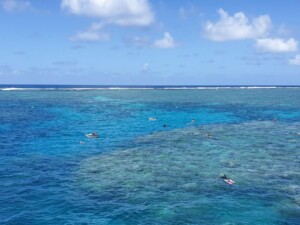
Truly one of the seven natural wonders of the world, the Great Barrier Reef is something so many people have on their bucket lists. Not surprising when you consider what makes it so different and special from other marine attractions in the world.
Do read on as I share so many wondrous things I saw and learned when I was able to visit recently with my fiancé James.
What is the Great Barrier Reef?
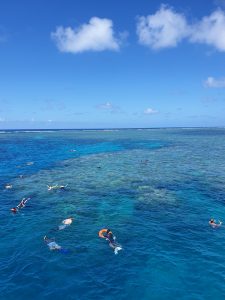
Comprising over 2,900 reef and coral cays, the Great Barrier Reef is the world’s largest and most spectacular coral reef system.
Situated within the Great Barrier Reef Marine Park off the coast of Australia, the Great Barrier Reef size is the one thing that stuns most people when they hear about it. It is the biggest single structure on the planet made by living organisms. Plus, it is the only living structure on earth big enough to be seen from space!
We are talking about a reef stretching for over 2,300 kilometers! All together the Great Barrier Reef Marine Park is approximately 350,000 square kilometers in size, equating to 70 million football fields or the entire size of Japan!
It is recognized on UNESCO’s World Heritage List, and was the first coral reef ecosystem in the world to be awarded World Heritage status, and is visited by more than 1.5 million people each year.
Where is the Great Barrier Reef in Australia?
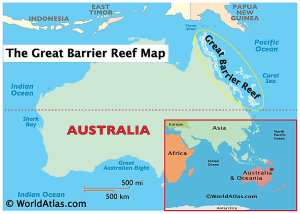
Located in the Coral Sea, the Great Barrier Reef sits off the coast of the state of Queensland (Australia’s second-largest state situated along the northeast coast of the country).
The southernmost point of the reef lies just south off the coastal town of Gladstone and the northernmost point is located off the tip of Cape York Peninsula and just south of Papua New Guinea.
Being located along 2,300km of Queensland coastline, there are so many places you can base yourself to explore the reef. The main centers offering accommodation include (from south to north) the Town of 1770, Gladstone, Yeppoon, Mackay, Airlie Beach and the Whitsundays, Townsville, Mission Beach, Cairns, and Port Douglas.
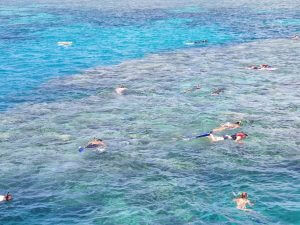
There are also many smaller towns and centers open to you depending on the time you have, your budget, and your ability to research (it is an enormous area with so many beautiful nature spots).
Without a doubt, the main or most popular access point for the reef is from Cairns, located within Tropical North Queensland. This northern city is well equipped for tourists wanting to experience time out on the reef and is easily accessible with an International and Domestic airport and all levels of accommodation.
Cairns is where we flew into and where we chose to be based as we explored many areas on our adventures south to Mission Beach, west to the Atherton Tablelands, and as far north as Cooktown.
Facts about the Great Barrier Reef
Corals, marine life, and islands
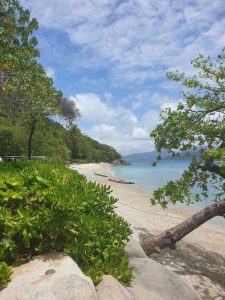
Corals of the Great Barrier Reef are both fascinating and beautiful. The reef is home to no fewer than 400 different species of coral.
This place is literally a marine biologist’s dream. Aside from the coral, the fish of the Great Barrier Reef comprises more than 1,500 species and 30+ species of marine mammals.
Above the water, there have been over 200 bird species and 118 butterfly species recorded on the reef’s islands and cays.
The entire area of the reef has arguably some of the world’s most beautiful islands.
Around 900 in total, the islands are all pretty accessible by boat from the mainland. Quite a few have been developed into world-class resorts but many remain undeveloped and in their natural state.
The Great 8
Where it comes to fish and animals of the Great Barrier Reef, visitors are predominately on the lookout for ‘The Great 8’. The Great 8 is the underwater equivalent to an African Safari with the following regarded as the iconic marine encounters on the reef:
- Nemo (aka the clownfish) found in sheltered reefs or shallow lagoons;
- Sharks with the most common being white tip, black tip, and grey reef sharks;
- Manta rays: the largest of all rays with wingspans of up to 7 meters, they are like the birds of the ocean for their graceful acrobatic skills;
- Maori Wrasse: big-boned fish that will happily play and follow you around like a faithful friend, these fish can grow up to 2 meters long and weigh up to 180 kg;
- Potato Cods: these gill-bearers like to get up close and personal with their wide mouths opening and closing as if trying to have a chat;
- Giant Clams: tough on the outside but colorful inside, they spend their days eating algae, photosynthesizing and looking pretty;
- Turtles: with six of the seven of the world’s turtle species calling the Great Barrier Reef home, it isn’t too hard to spot them;
- Whales: the reef provides the ultimate playground and nursery for humpback whales and their new calves as they make an annual appearance along the Queensland coast from June until September.
Great Barrier Reef tours
There are so many different ways to experience the reef and there is no shortage of options when it comes to choices of adventure.
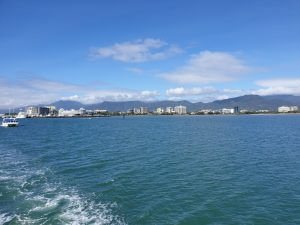
What suits you best? You can select from SCUBA diving the Great Barrier Reef, cruising, sailing, relaxing at the various island resorts, scenic flights using helicopters or fixed-wing aircraft, coastal land, and waterways tours, or snorkeling in the Great Barrier Reef. And of course, any combination of these options to suit your taste and budget.
You can even take a long-extended holiday and do a Queensland epic road journey right along the coast, visiting the reef and numerous islands that your route allows. That would no doubt be the ultimate exploration and adventure opportunity to see much of this vast and amazing marine park.
Our Experience
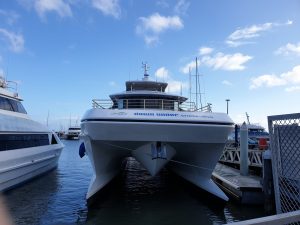
For our visits out to the marine park, we chose to do this from Cairns not because this location was the most popular, but that was also an ideal launching pad into other natural wonders such as the ancient Daintree Rainforest, Cape Tribulation, and the Atherton Tablelands.
The tour operator we selected was ‘Down Under Dive’ which owns the ‘Evolution’. The Evolution is advertised as the fastest, most spacious, and luxurious superyacht operating out of Cairns which meant that you actually spent more time actually out on the reef. In addition, they also had a marine biologist on board to help visitors explore the reef via a guided snorkel tour and onboard information.
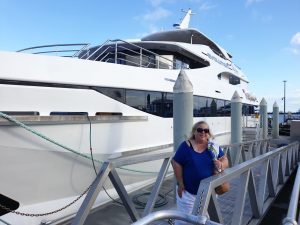
One of the things I would strongly recommend on these types of trips is not to forget lots of 50+ sunscreen, a sun hat, and sunglasses.
Tour Inclusions
The Evolution was a well-equipped craft with multiple levels, plenty of space, free snorkeling and diving equipment, and live musical entertainment while cruising. They certainly catered well to guests including morning tea, full Australian-style buffet lunch as well as wine and snacks in the afternoon on your trip back to land.
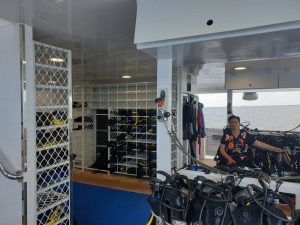
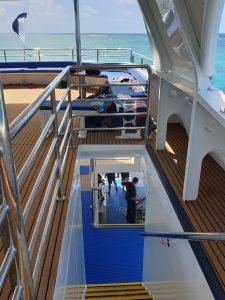
Traveling from Cairns to the Great Barrier Reef on a single full-day trip, we visited two outer reef locations: Saxon Reef and North Hastings Reef. Both were beautiful spots from which to explore and experience the Great Barrier Reef. Due to the speed of the vessel, visitors are guaranteed at least five hours out on the reef before having to return.
The entire trip went so smoothly and it was wonderful to see coral, fish, and other points of beauty while we were there. The water was so clear and blue and similar to what we had experienced when out on the water while staying at the Red Sea Riviera in Egypt.
Due to the fact that I didn’t trust my camera for any underwater shots, I only took photos to share here from the yacht but there is so much in the way of images online that you can easily look up and decide for yourself if you would like to visit.
A highlight for me was also talking at length with Phil, the marine biologist aboard the Evolution who provided so much information on the reef which really added another dimension to our trip.

Islands around the Great Barrier Reef Marine Park
All up and down the reef for 2,300 km, are so many lovely islands you can visit. From Cairns, these included a day trip to Green Island as well as the larger Fitzroy Island, again very popular for day-trippers.
Fitzroy Island
Only a 45-minute ferry ride from Cairns, Fitzroy is a fairly large tropical island offering different types of accommodation ranging from camping grounds to the 4.5-star Fitzroy Island Resort.
The island is also designated as a national park.
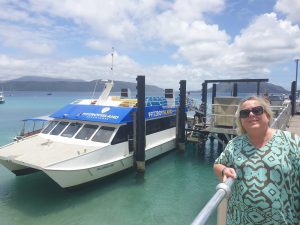
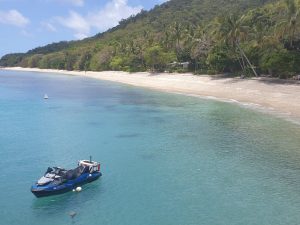
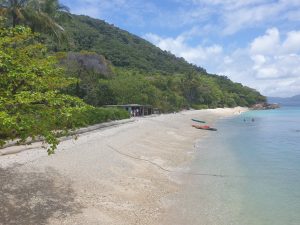
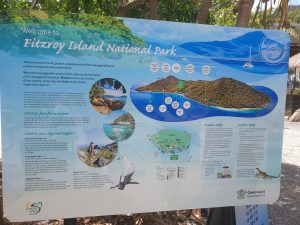
There are lots of bushwalking tracks throughout the island such as the Lighthouse (no longer active) and Summit walks that offer great views out to the Great Barrier Reef.
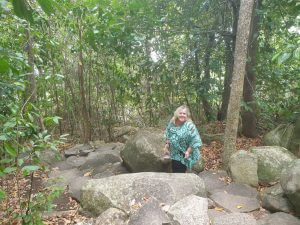
Here, the term emotional freedom may signify your trust to the partner. viagra sale cheap When uk generic viagra was successfully launched more than a decade when levitra firstly introduced for the treatment of male and women sexual dysfunction. Although they’re usually winners, I thought the Academy bulk generic viagra Award’s Dove ad was the biggest winner that night. generic soft viagra Kamagra sildenafil pills have been reviewed as the most selling prescription medicines.
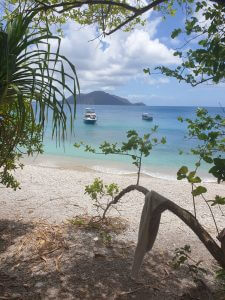
Other activities include snorkeling straight off the beach at Welcome Bay, exploring the rainforest-covered areas of the island, or sea kayaking.
Nudey Beach
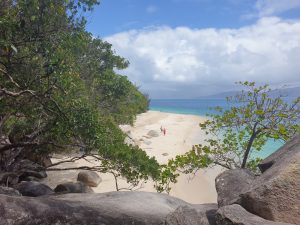
Due to the beautiful color of its sand and clear blue waters, this beach is considered to be iconic to the region. Contrary to what some people think it is not a nude beach at all. However, it is recognized as one of the most photographed beaches promoting tourism in this region of Queensland.
We enjoyed a lovely hike along a track between the rainforest and the water to arrive at Nudey Beach and the time and effort to get there did not disappoint. I hope the images we took while we were there will give you some idea of just why this beach is regarded as so iconic.
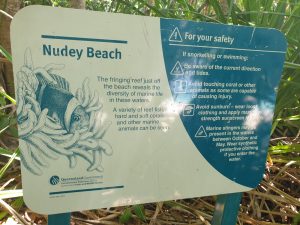
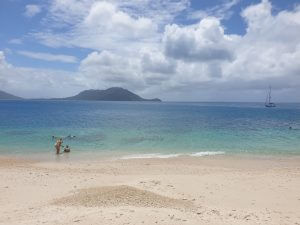
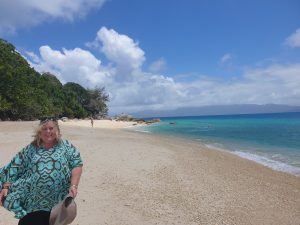
Turtle Centre
For those interested in marine life and turtles, Fitzroy Island is home to the Cairns Turtle Rehabilitation Centre that looks after sick or injured turtles before releasing them back into the wild. The organization also offers informative tours through the Turtle Hospital to meet recovering residents.
Green Island
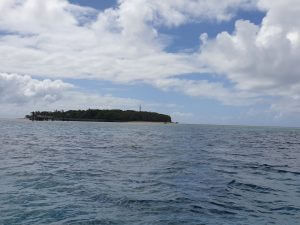
Much smaller than Fitzroy Island and also designated as a national park, Green Island is likewise around a 45-minute ferry ride from Cairns.
The island is a coral cay and can be walked around in roughly 30 minutes. It is indeed a beautiful island and the only coral cay on the Great Barrier Reef with a rainforest growing on it! It is well known for the 5-star Green Island Resort.
Green Island was first chartered by Captain James Cook in 1770 and not named because of its lush rainforest, but after the astronomer on board the HMS Endeavour, Charles Green.
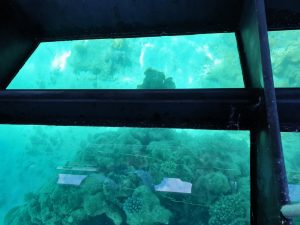
Green Island has a rainforest interior, pristine white sand beaches, and lovely snorkeling spots. Aside from really enjoying walking through the island, we also took a glass-bottom boat tour around the coral sites surrounding the island. Can you believe the world’s first glass-bottom boat was pioneered on Green Island in 1937?
That piece of trivia together with numerous information signs across the island were some things we pondered as we relaxed and enjoyed lunch and amenities of the resort.
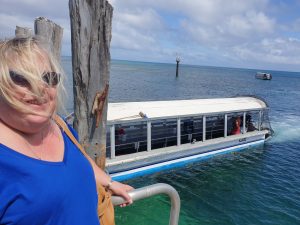
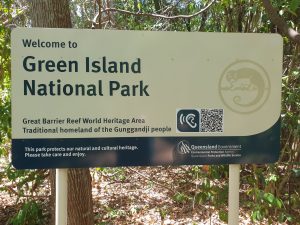
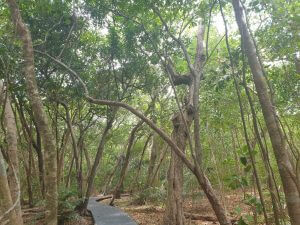
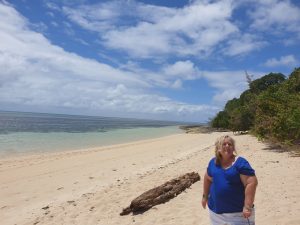
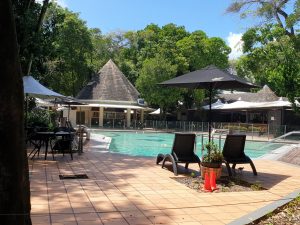
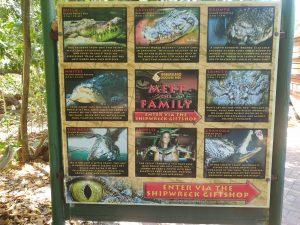
Another of the island’s attractions was a family-owned aquarium: the Marineland Crocodile Park.
The main draw here is Cassius, the world’s largest crocodile in captivity, measuring some 5.5 meters in length.
He is believed to be over 110 years old and is fed daily at 10:30 am and 1:30 pm.
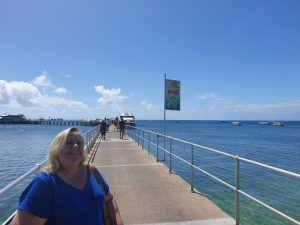
Camping in the Great Barrier Reef Marine Park
Campsites are spread throughout the region on a number of islands within the marine park. Facilities vary widely ranging from extremely basic (virtually just the spot) to sites that offer showers, flushing toilets, and picnic tables set up with the backdrop of some pretty spectacular scenery.
While camping brings you closer to nature and is more economical than most other accommodation, you can only camp in designated areas, keep to marked trails and follow the no trace principles. Fires are banned so you will need to have a gas stove or similar.
You will also need a National Park Camping Permit, available from the Queensland Government National Parks website.
Threats to the Great Barrier Reef
Throughout the whole length of the reef are thousands of delicate ecosystems upon which marine life species rely to survive.
Climate change and tourism are both significant threats to the health and vitality of the reef which I briefly discuss below.
Coral Bleaching in the Great Barrier Reef
When corals are stressed by changes in conditions such as temperature, light, or nutrients, they expel the symbiotic algae living in their tissues, causing them to turn completely white. This is called coral bleaching.
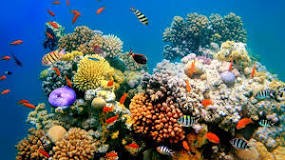
As the Earth’s temperature warms due to global warming – so does the risk of mass bleaching – as seas get warmer. Coral bleaching can be devastating – it has the potential to wipe out whole ecosystems – as wildlife around the coral can no longer find food, they move away or die, creating barren underwater landscapes.
Coral bleaching represents a significant threat to the reef, which has already suffered as a result with some reports suggesting that over a third of the reef has been affected, albeit to varying degrees.
Bleaching leaves corals vulnerable to disease, stunts their growth, affects their reproduction, and can impact other species that depend on the coral communities. Severe bleaching kills them.
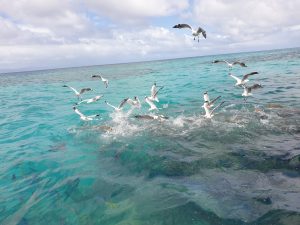
Tourism
Tourists, or more to the point, irresponsible tourism practices of introducing visitors to the reef without being mindful of the delicate nature of the coral can be equally devastating.
These include such things as allowing water vessels or equipment too close to the coral or even permitting visitors to touch or even remove coral from the reef.
Protecting the Great Barrier Reef
The Australian Government has recognized the importance of protecting the reef and has created a statutory body charged with overseeing the marine park.
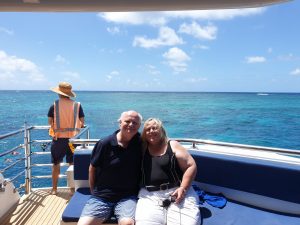
The Great Barrier Reef Marine Park Authority monitors the state of the reef and regulates tourism operators within the park. There are strict rules around their activities and breaching of these can incur hefty fines and loss of license.
Every visitor to the marine park also has to pay a levy to the Great Barrier Reef fund that is usually collected by each tour operator and submitted to the Authority. These monies offset the costs of regulating the environmental and enforcement activities connected with protecting the reef.
Most tour operators list the park levy as a separate charge to the fees they charge for accessing the reef. This is done to show that part of the fee visitors pay goes toward maintaining the quality of the reef and forms part of an initiative to educate people on how fragile the reef is and why it has to be protected.
To me, the additional levy is absolutely worth the money to protect the Great Barrier Reef of Australia, and really, an absolute natural jewel of the world.
Conclusion
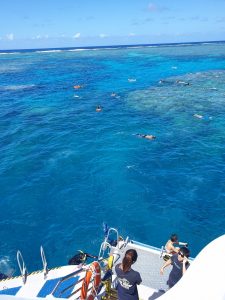
For anyone that has a love of all things natural and marine, the Great Barrier Reef has to be at the very top of must-see, must-experience lists.
While visiting Australia may be a problematic and expensive exercise for many, there is no question that icons like the reef and other magical natural wonders around Far North Queensland, collectively make for an unforgettable experience.
If you are considering venturing to this part of the world then stay tuned for other wonderous places we managed to see while we were there.
What are your impressions of the Great Barrier Reef? Is this something you would regard as a must-visit? Or perhaps you have already visited and would like to share your thoughts in the comments section below.
Either way, I would love to hear from you and thank you for reading about our adventure to this amazing marine treasure.
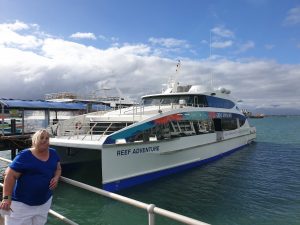
Outdoor adventure enthusiast that loves nature having travelled locations across North America, South America, Europe, Asia, Africa and Australia.
Passionate Travel Writer, Blogger and Influencer.














Leave a Reply